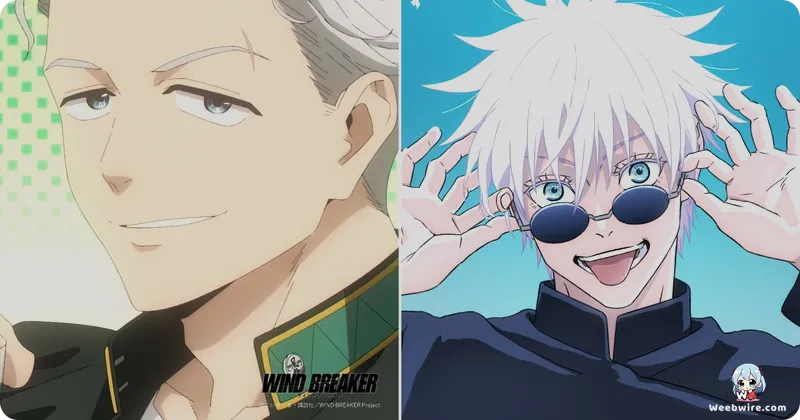Beyond the Fists: Unpacking the Hidden Depths and Unsung Details of WIND BREAKER

As WIND BREAKER continues to captivate audiences, especially with its highly anticipated second season, the series distinguishes itself far beyond its thrilling action sequences. Nii Satoru's unique saga defies conventional delinquent tropes, revealing a universe rich with fascinating, often understated, details that significantly enhance its profound appeal. This isn't merely another brawler's tale; it's a meticulously crafted world where strength assumes a surprisingly noble and multifaceted definition, challenging preconceived notions of power and community.
At its core, WIND BREAKER masterfully redefines the 'delinquent' archetype. Unlike typical narratives focused on personal dominance or gang warfare for territory, Furin High School's formidable students serve as unexpected guardians of their community, a deeply embedded cultural philosophy that prioritizes protection and collective well-being. This unique approach transforms what might seem like a violent premise into a heartwarming exploration of responsibility and belonging.
The Unconventional Leaders of Furin
Leaders like the enigmatic Hajime Umemiya exemplify this spirit with remarkable depth. Despite his imposing presence and reputation as one of Furin's strongest, Umemiya’s remarkably domestic side—frequently depicted cooking elaborate meals for his gang members or meticulously tending to his plants—underscores the powerful 'found family' dynamic at the heart of the series. This duality, portraying him as both a ferocious protector on the streets and a gentle, nurturing guardian within his chosen family, elevates the series beyond simplistic archetypes, showcasing the true complexity of its characters.

Sakura Haruka, the protagonist, is equally intriguing and central to the series' thematic depth. His striking heterochromia, with one blue eye and one red, visually symbolizes his internal struggle for identity and duality: a fiery ambition to prove himself strong versus a profound, often hidden, yearning for genuine connection and acceptance. Initially driven by a common shonen pursuit of raw strength and a desire to be feared, the series artfully reveals Sakura's true power lies not in his fists alone, but in his evolving empathy, his growing capacity for self-reflection, and the profound realization that genuine strength stems from protecting others and fostering unwavering trust among comrades. His initial mask of indifference often conceals a vulnerable interior, a trait that beautifully blossoms through his interactions and developing bonds with the diverse students of Furin.
CloverWorks' Artistic Mastery and Unified Vision
The acclaimed animation studio, CloverWorks, collaborating closely with Aniplex, has meticulously translated Nii Satoru's distinctive art style and dynamic action sequences to the screen with breathtaking fidelity. Their painstaking fight choreography, weaving detailed, almost dance-like sequences, brilliantly showcases each character's unique fighting style and individual strengths. This exceptional attention to detail transcends mere visual flair; it subtly conveys deeper character depth, skill, and even emotional states within the heat of battle, making every punch and dodge feel impactful and meaningful.
Furthermore, a significant distinction that sets WIND BREAKER apart is the remarkable absence of internal power struggles or hierarchical conflicts within Furin High itself. Unlike many delinquent narratives that thrive on internal gang politics and betrayals, Furin’s students exhibit an extraordinary and refreshing unity. Their conflicts are almost exclusively external, directed against those who threaten their beloved town or its inhabitants. This unwavering focus on community protection over personal dominance or internal strife offers a refreshing departure, accentuating powerful themes of belonging, shared purpose, and collective responsibility, which in turn fosters deeper, more authentic character interactions and strengthens their unbreakable bonds.
Fashion, Color, and Community
Nii Satoru is also celebrated for his incredibly detailed character designs and impeccable fashion sense. Every character's attire, from Sakura's iconic jacket that subtly shifts with his mood to Suou's oversized coat that hints at his reserved nature, is thoughtfully chosen to mirror their personality and serve as visual extensions of the characters themselves. The anime's vibrant color palette also plays a pivotal role in conveying mood, atmosphere, and character emotions, adding another layer of visual storytelling. Even seemingly minor figures, like Tomiyama, the diner owner, serve as a neutral sanctuary and subtle mentor, reinforcing the community's intricate social contract and the network of support that underpins Furin's protective ethos.
WIND BREAKER’s widespread success can be attributed to its broad and inclusive appeal. While its thrilling action sequences undoubtedly captivate shonen fans, its profound emphasis on emotional development, the powerful concept of 'found family,' and its masterful subversion of traditional 'tough guy' stereotypes has resonated deeply with a much wider audience. It stands as a powerful testament that a story centered around 'gangs' can be profoundly heartwarming, inspiring, and deeply meaningful, proving that true strength isn't always about who delivers the hardest punch, but rather who cares the most, who protects their community, and who builds unbreakable bonds. This compelling fusion of dynamic action and heartfelt character drama is the authentic, surprising power that defines WIND BREAKER and solidifies its place as a standout series.
Credits
WIND BREAKER
Author
Nii Satoru
Cover Art
Nii Satoru
Studio
Aniplex
Publisher
Kodansha
Producers





